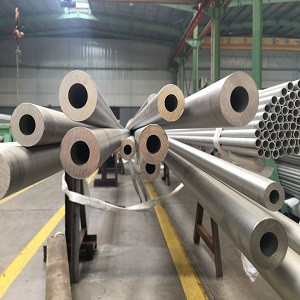What is the difference between a tube and a hollow bar?
Tubes and hollow bars are commonly used in various industries for structural and mechanical applications. While they may appear similar, there are significant differences between the two in terms of their construction, functionality, and applications.
Functional Features
Tubes are cylindrical structures with a hollow center, typically manufactured with precise outer diameters and thicknesses. They are designed to withstand internal or external pressure and are often used for conveying fluids or gases. On the other hand, hollow bars are solid cylindrical bars with a hole or hollow center, providing excellent strength and stiffness while reducing weight. They are primarily utilized in applications requiring high torsional rigidity and strength-to-weight ratio.
Advantages and Disadvantages
Tubes offer versatility in terms of shape and size, making them suitable for a wide range of applications such as piping, structural supports, and heat exchangers. They provide efficient fluid flow and can be easily welded or joined. However, their hollow construction may result in lower strength compared to solid bars, particularly under compressive or bending loads.
Hollow bars, on the other hand, offer superior strength and stiffness due to their solid construction, making them ideal for applications requiring high mechanical performance, such as shafts, axles, and precision machined components. They exhibit excellent resistance to torsional forces and bending moments but may be more challenging to manufacture and process compared to tubes.

Indicator Differences
Recommended article:What are the types of pipe in oil and gas industry?
One key difference between tubes and hollow bars lies in their manufacturing standards and dimensional tolerances. Tubes are typically produced to specific outside diameters (OD) and wall thicknesses, with standardized dimensional tolerances according to industry standards such as ASTM or DIN. In contrast, hollow bars are manufactured with precise inner and outer diameters, often with tighter tolerances to ensure consistent performance in high-stress applications.
Applications
Tubes find widespread applications in industries such as automotive, aerospace, construction, and chemical processing, where they are used for structural support, fluid transport, heat exchange, and pneumatic systems. They are available in various materials, including steel, aluminum, copper, and plastic, to suit specific requirements.
Hollow bars are commonly employed in mechanical engineering applications that demand high strength, rigidity, and dimensional accuracy. They are utilized in the production of machine components, shafts, spindles, and hydraulic cylinders, where their superior mechanical properties and precision machining capabilities are critical for optimal performance.
Conclusion
In conclusion, while tubes and hollow bars share similarities in their cylindrical shapes and hollow interiors, they serve distinct purposes in engineering and manufacturing applications. Tubes offer versatility and efficiency in fluid transport and structural support, while hollow bars provide superior strength and stiffness for high-performance mechanical components. Understanding the differences between the two is essential for selecting the most suitable option based on specific application requirements and performance criteria.
At Hengyang, we prioritize customer satisfaction and deliver exceptional products that meet stringent quality standards. Contact us now.

Comments
0